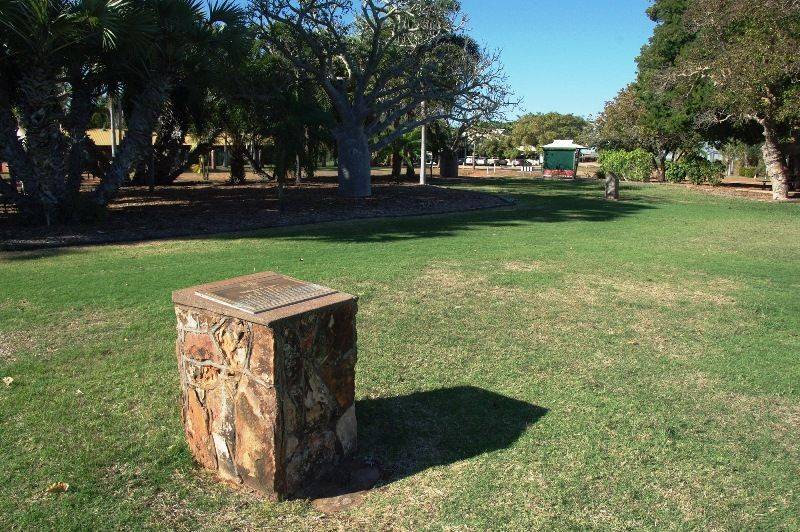
Home » Themes » People » Exploration
William DampierPrint Page 
The memorial commemorates William Dampier (5 September 1651 - 8 March 1715) who was the first Englishman to explore parts of New Holland (Australia) and the first person to circumnavigate the world three times. The memorial was erected in 1988 as a Bicentennial Project.
In 1699 Dampier was given the command of the Roebuck with a commission from the Admiralty His mission was to explore the east coast of New Holland, the name given by the Dutch to what is now Australia.
Following the Dutch routes to the Indies, Dampier reached Dirk Hartog Island at the mouth of what he called Shark Bay in Western Australia. He landed and began producing the first known detailed record of Australian flora and fauna. The images are believed to be by his clerk James Brand. Dampier then followed the coast northeast, reaching the Dampier Archipelago and then Lagrange Bay, just south of what is now called Roebuck Bay.
In William Dampier`s book, "A voyage to New Holland, &c. in the year, 1699", he states " `Twas the 7th of August when we came into Shark's Bay; in which we Anchor'd at three several Places, and stay'd at the first of them (on the W. side of the Bay) till the 11th. The National Museum of Australia states that he made landfall in Shark Bay on the 6th of August 1699.
Location
| Address: | Hamersley & Weld Streets, Bedford Memorial Park, Broome, 6725 |
|---|---|
| State: | WA |
| Area: | AUS |
| GPS Coordinates: | Lat: -17.962605 Long: 122.239141 Note: GPS Coordinates are approximate. |
Details
| Monument Type: | Monument |
|---|---|
| Monument Theme: | People |
| Sub-Theme: | Exploration |
Dedication
| Approx. Monument Dedication Date: | 1988 |
|---|
Australia
1788 - 1988
William Dampier
1788 - 1988
Navigator, Writer, Naturalist, Buccaneer
First Englishman to set foot on Australian soil (New Holland) on 5 January 1688
Visited Broome area in 1699 in "HMS Roebuck".
His journals led to British interest in the Southland and subsequent settlement 100 years later of Australia.
This memorial erected by the Broome Shire Council and Australia - Britain Society as an Australian Bicentennial Project with financial assistance from the Commonwealth Government.






